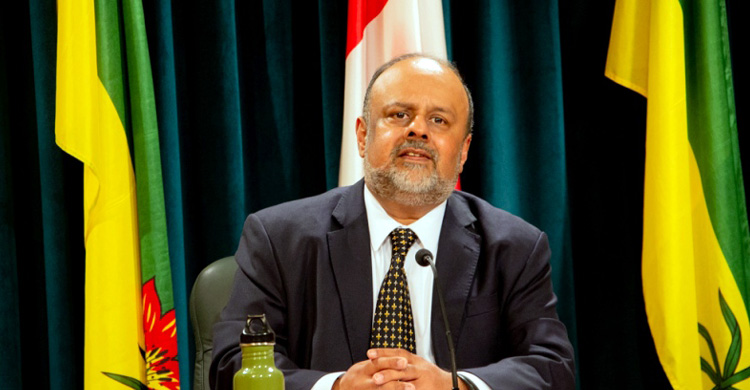Saskatchewan’s top doctor says his recommendation on wearing masks to protect against COVID-19 could change in the coming months.
Wearing a mask in Saskatchewan isn’t required now, but chief medical health officer Dr. Saqib Shahab says it might turn into a standard if there’s an uptick in transmission rates.
“I may give a proposal to wear a mask all the time when you’re indoors, in a setting where you can’t dependably keep up two-meter separation,” he said.
For the time being, everybody ought to heft around reusable cloth masks that they can wear in situations where they can’t keep physical distance from others, he added.
“I think this is something that we need to now learn to carry with us.”
Premier Scott Moe has said that if people feel more comfortable wearing a mask, they should do so.
He said he has a few disposable masks and has worn one.
“Not all the time, but for instance when I go for a haircut,” he told a recent news conference.
Shahab said what’s top of mind for him in the coming months, as more people begin to socialize, is how the province can sustain more public interaction without having a second wave of infections.
“We’ll have to learn to manage it without having to go into lockdown,” he said. “There’s tremendous human, economic, financial cost to that.”
So far, Saskatchewan has largely been spared some of the worst of the COVID-19 pandemic in terms of case numbers, deaths and outbreaks in long-term care homes such as those in Ontario and Quebec. The province has seen outbreaks in its far north region and in Hutterite colonies in the south.
As of Tuesday, the province reported 88 active infections out of a total of 785 cases. Five people remain in hospital and 13 have died.
The government has been steadily rolling back public health restrictions it introduced in March and April to slow the spread of the virus.
Shahab, who now considers it a good day when he works 12 hours instead of 20, estimates that social mixing has returned to between 50 to 60 per cent.
When students return to schools in September, he believes that will rise to about 80 per cent.
“Between 60 to 80 is the danger zone,” he said.
As more people move their gatherings indoors with the change in seasons, he said wearing a cloth mask is going to become more important.
News source: The Canadian Press











